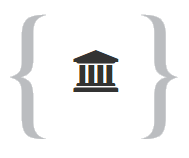Ο ναός ανήκει στον νησιωτικό οκταγωνικό τρουλαίο τύπο. Είναι μια μικρή αναπαραγωγή του καθολικού (κεντρικός ναός) της Νέας Μονής και είναι ένα πολύ καλοδιατηρημένο βυζαντινό μνημείο, πλούσια διακοσμημένο εξωτερικά με πλίνθινα σχέδια (οδοντωτές ταινίες, φιαλοστομία, πλίνθινα τόξα). Ο Αντώνιος Δομέστιχος, Κένυγος, από την Κρήτη έφτιαξε το εσωτερικό το οποίο καλύπτεται με τοιχογραφίες το 1665.
Ο μοναχός Συμεών, σύμφωνα με επιγραφή στην κύρια είσοδο του ναού, ο οποίος αργότερα έγινε μητροπολίτης Χίου, ανήγειρε τον ναό «από τα θεμέλιά του» το 1564. Ωστόσο, αυτό πιθανότατα αναφέρεται σε ανακαίνιση του μνημείου, αφού αρχιτεκτονικά και μορφολογικά χαρακτηριστικά οδηγούν στο συμπέρασμα ότι ανεγέρθηκε στα μέσα του 14ου αιώνα. Το 1985 ξεκίνησε η αναστήλωση των τοιχογραφιών του ναού και αυτή βρίσκεται ακόμη σε εξέλιξη.
(EL)
The church belongs to the insular octagonal domed type. It is a small reproduction of the catholicon (main church) Nea Moni and it is a very well-preserved Byzantine monument, richly decorated outside with brick patterns (denticulated bands, phialostomia, brick arches). Antonios Domestichos, Kenygos, from Crete made the interior which is covered with wall paintings in 1665.
The monk Symeon, according to an inscription over the main entrance of the church, who later became the metropolitan bishop of Chios, erected the church “from its foundations” in 1564. However, this probably refers to a renovation of the monument, since its architectural and morphological features point to the conclusion that it was erected in the middle of the 14th century. In 1985, began restoration of the wall paintings of the church and this is still in progress.
(EN)
 Ινστιτούτο Πληροφορικής - Ίδρυμα Τεχνολογίας και Έρευνας
Ινστιτούτο Πληροφορικής - Ίδρυμα Τεχνολογίας και Έρευνας



 Πόλη / χωριό / οικισμός
Πόλη / χωριό / οικισμός







